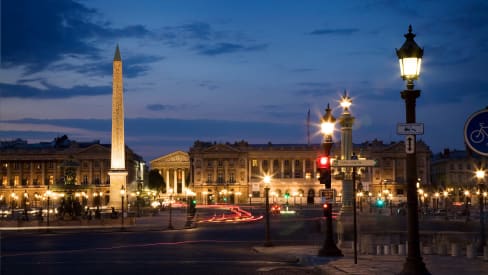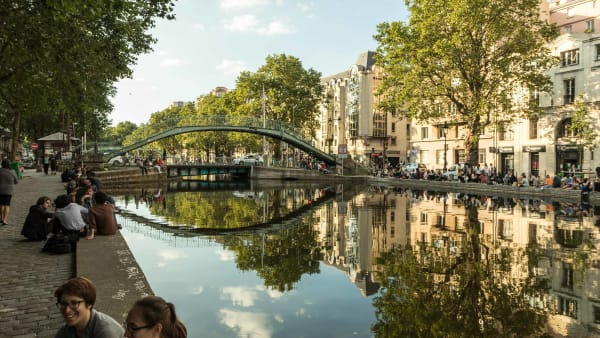Place de la Concorde
The largest square in Paris, Place de la Concorde, holds a huge historical significance in the history of France
Place de la Concorde
The largest square in Paris, Place de la Concorde, holds a huge historical significance in the history of France
Place de la Concorde is one of the most important public squares in France, as well as the largest in Paris. The location is famous not only for its beautiful fountains and its Egyptian obelisk but also for being the scene of notable executions during the French Revolution.
Place de la Concorde is also located rather centrally, between the Champs-Élysées and the Jardin des Tuileries. With such a position, the square is a popular stop along the routes taken by Paris hop-on hop-off buses. You can [get Tootbus tour tickets here]( https://www.getyourguide.com/paris-l16/paris-1-2-or-3-day-open-hop-on-hop-off-tour-t381474/?partner_id=IG4VKS7&utm_medium=online_publisher&placement=content-top&cmp=Inline and [Big Bus tickets here]( https://www.getyourguide.com/paris-l16/paris-hop-on-hop-off-tour-1-and-2-day-ticket-t4059/?partner_id=IG4VKS7&utm_medium=online_publisher&placement=content-top&cmp=Inline - they are the most reliable companies.

The Concorde Square was originally designed in the mid-1700s in honour of King Louis XV. However, its time as such was short-lived. By the end of 1789, Place de la Concorde had become a central stage in the French Revolution, even getting renamed Place de la Revolution.
Out of all the people guillotined in Paris during this time, almost half of them were executed in Place de la Concorde - 1,119, to be exact. Some of the most notable figures include the King and Queen at the time, Louis XVI and Marie Antoinette, as well as public figures like Lavoisier and Robespierre.
When the time of the square as a public beheading stage ended, the Place once again got a new name, one that would last for a longer time than the previous one, Place de la Concorde.
Nowadays, the square has a majestic atmosphere, thanks to the monumental pieces that decorate it. First among them is the Luxor Obelisk, a 3,000-year-old Egyptian obelisk taken from the Luxor Temple. The granite column is 23 metres (75 feet) tall and weighs over 250 tonnes.
Other stunning pieces in Place de la Concorde are the two water-themed Neoclassical fountains, the Fountain of the Seas and the Fountain of River Commerce and Navigation.
The northern side of the square is occupied by two palatial buildings with grand Neoclassical façades, the Hôtel de la Marine and Hotel Crillon.
Location
Between the 8th and the 1st arrondissements.
Transport
Paris hop-on hop-off buses all stop by Place de la Concorde. The most recommendable and popular of these bus companies are Big Bus and Tootbus. You can get a [Tootbus hop-on hop-off bus tour here]( https://www.getyourguide.com/paris-l16/paris-1-2-or-3-day-open-hop-on-hop-off-tour-t381474/?partner_id=IG4VKS7&utm_medium=online_publisher&placement=content-top&cmp=Inline or [book a Big Bus tour here]( https://www.getyourguide.com/paris-l16/paris-hop-on-hop-off-tour-1-and-2-day-ticket-t4059/?partner_id=IG4VKS7&utm_medium=online_publisher&placement=content-top&cmp=Inline .
Otherwise, you can always take public transport, using the following lines.
Nearby sights
Musée de l’Orangerie - just east of Place de la Concorde, in the Tuileries Gardens.
Jardin des Tuileries - just east of Place de la Concorde.
Jardin des Champs-Élysées - just west of Place de la Concorde.
Petit Palais - 700 m (a little over 0.4 miles) west, 9-minute walk.
Musée d’Orsay - 700 m (a little over 0.4 miles) southeast, 9-minute walk.
Place Vendôme - 750 m (under 0.5 miles) northeast, 10-minute walk.
La Madeleine - 850 m (a little over 0.5 miles) northwest, 11-minute walk.
















